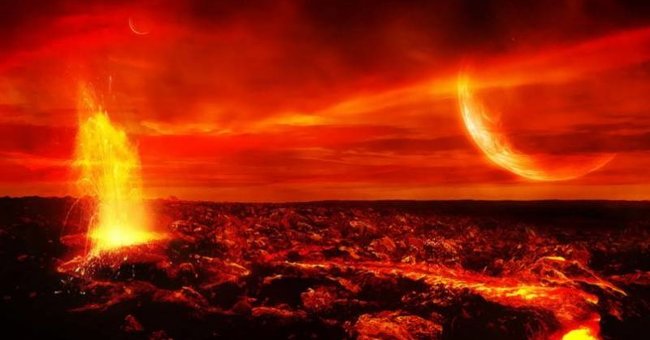Strange worms grow 2 heads when living for 5 weeks in the universe
After being sent to the International Space Station for 5 weeks, in the gravityless condition and influenced by the field from Dugesia japonica, the clones were split, even one of them turned into a session two-headed version.
- Why does SpaceX send the deadly virus to the International Space Station?
- Special gene mutations turn people into "superheroes"
This is the result of biologists from Tufts Private Research University (USA) published in the journal Regeneration.

Image of two-headed worms.(Source: sputniknews.com)
Dugesia japonica worm is a flatworm genus, commonly found in freshwater environments in Europe, Asia, Africa, Australia and the Middle East. They are known for their ability to replicate themselves when a part of their body is removed.
The scientists sent Dugesia japonica to the space on January 10, 2015 for 5 weeks. There, they are kept in test tubes filled with water and air. These test tubes are completely placed in the dark. The samples included intact ones and some had their heads and tails removed.
After the space worm group was sent back to Earth, the scientists were amazed to see that the intact worms were brought into space to be reborn as "two-headed" worms. In particular, up to 2 heads appear at the head and tail positions are cut rather than a head and a tail.

All of the worms introduced into space undergo spontaneous division of the body, they split into two or more identical individuals - while the earth worm is not so capable. The researchers said that the cause of this could be due to sudden temperature changes when worms move from the Earth to outer space.
In the next experiment, the scientists plan to conduct a direct surgical removal of the head and tail of Dugesia japonica on the International Space Station (ISS) to monitor the reconstruction in space from the beginning. to the end.
You should read it
- Trojan worms' hybrid
- Discover the 'tiny workers' who are diligently cleaning up methane gas in the deep sea
- Two new earthworms are found in Kerala
- Why do scientists get worms to drink and make them spin like this?
- Goose bumps with movements like fictional creatures of bloodworms
- The mystery of a giant 1.5-meter-long worm eating both hydrogen sulfide and rotten gas
- The list of the 10 most famous hackers in the world
- The 70 mm worm was found in the eyes of a woman in Kerala
May be interested
- Science explains why Venus has so few volcanoes
 researcher sami mikhail has just released the latest claims explaining why venus has so few volcanoes.
researcher sami mikhail has just released the latest claims explaining why venus has so few volcanoes. - Return to the historic moment when NASA spacecraft landed on the Moon through a re-created film from over 14,000 photos
 a vivid, 1-0-2 film, meticulously and meticulously recreating the photographer's moment of breathtaking nasa spacecraft, the film maker christian stangl surprised many.
a vivid, 1-0-2 film, meticulously and meticulously recreating the photographer's moment of breathtaking nasa spacecraft, the film maker christian stangl surprised many. - The surface of Venus: Why is Venus the hottest planet in the solar system?
 join us to find evidence that explains the question: why is venus the hottest planet in the solar system? please!
join us to find evidence that explains the question: why is venus the hottest planet in the solar system? please! - Fire needs air to burn, so how does the rocket work in space?
 commercial airplanes and fighter planes burn fuel by using the oxygen available in the atmosphere, but what about those missiles flying into space? invite you to find out!
commercial airplanes and fighter planes burn fuel by using the oxygen available in the atmosphere, but what about those missiles flying into space? invite you to find out! - The lost twin brothers of the Sun may be the culprits for the destruction of dinosaurs
 the group of american astronomers has found evidence of the existence of a twin planet with the sun, which once caused great catastrophe on earth. let us find out about the lost twin brother of the sun who may be the culprit of this dinosaur destruction!
the group of american astronomers has found evidence of the existence of a twin planet with the sun, which once caused great catastrophe on earth. let us find out about the lost twin brother of the sun who may be the culprit of this dinosaur destruction! - 2 more moons found around Jupiter
 new jupiter 2 moon has been discovered by scientists, bringing the planet's total moon to 69 individuals.
new jupiter 2 moon has been discovered by scientists, bringing the planet's total moon to 69 individuals.






 The strange creature re-grows its head, turning its prey into water
The strange creature re-grows its head, turning its prey into water 12 strange and interesting facts about the universe: How many of you know?
12 strange and interesting facts about the universe: How many of you know? Marvel at the strange surviving animals after the 'head left the neck'
Marvel at the strange surviving animals after the 'head left the neck' Goose bumps with movements like fictional creatures of bloodworms
Goose bumps with movements like fictional creatures of bloodworms 10 strange and interesting facts about the universe you may not have heard of
10 strange and interesting facts about the universe you may not have heard of